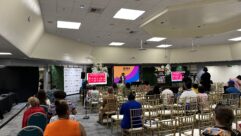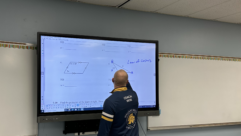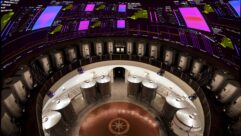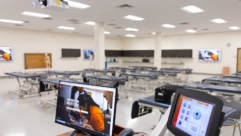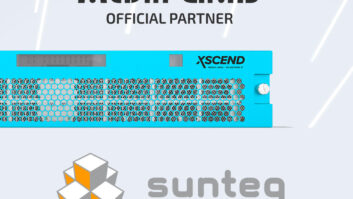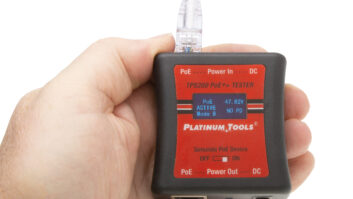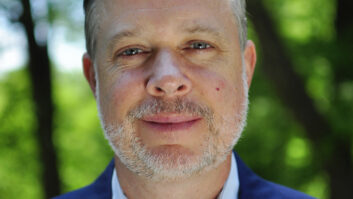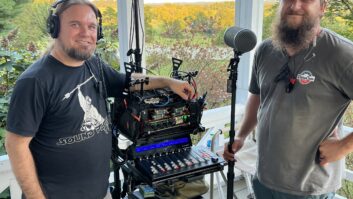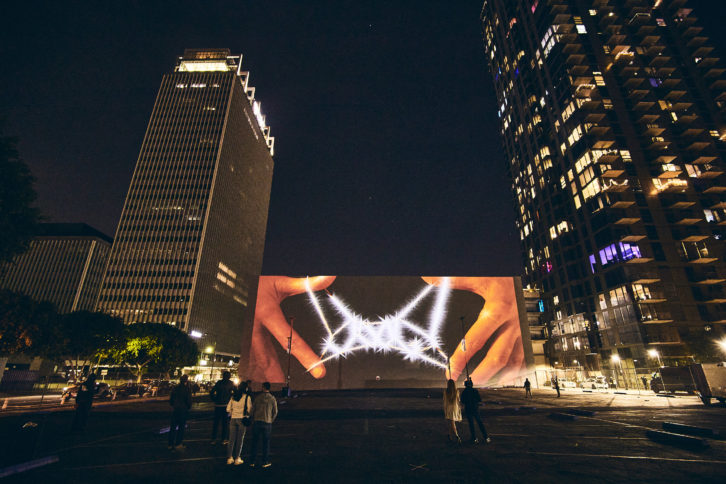
On April 10th, while we were still mostly in lockdown, my fellow Angelenos and I received a gift of video art, casted onto multiple downtown architectural buildings, taking over the night for a five-block radius. Wandering among the large immersive canvases, an estimated 13,200 viewers guided themselves on an artistic journey, which was free to anyone who chose to come, or who simple stumbled upon the moment unaware.
One of the most interesting and cutting edge aspects of LUMINEX: Dialogues of Light was the content creation. Well-known visual artists Carole Kim, Nancy Baker Cahill, Refik Anadol, Sarah Rara, Luciana Abait, and Akiko Yamahshito drew on AI, augmented reality, multi-channel video, and other unique technological approaches that brought a level artistic intensity; they proved that large format immersive projection has so far only scratched the surface of its potential. And, there was portable personal audio: visitors were able to download the QR code to access an interactive map and listen to the recorded soundtracks.
Projection of these dynamic and immersive installations was made possible through the use of Panasonic’s 4K projection technology, which included the PT-RQ32, PT-RZ31K, PT-RQ50K, and PT-RZ21K three-chip DLP SOLID SHINE 4K laser projectors. In addition to being an in-person event, the exhibit was also livestreamed to viewers around the world.
“These projectors are really designed for these types of large scale applications where there may be ambient light,” says Brian Duffy Business Development Executive at Panasonic. He immediately praises the production company for the show—Show Imaging of Vista, CA—before elaborating on the projectors.
Duffy says one of the models that stood out most in this case was the RQ30. “It really is unique—one of the world’s most powerful projectors for its size. It’s the only 50K that is self-contained. Any other projectors would need a separate cooling system and machinery.”
Lenses for most part were straight conventional throw, he says, decently wide for a throw about 100 to maybe 150 feet; naturally there was stacking and edge-blending.
Show Imaging brought in disguise servers to manage the image distribution and up-rez as needed; servers were installed locally for each projector site. “Our projectors are able to dial down to the granular level of color,” Duffy says. “For example, Refik Anadol’s work was very color driven—colors have specific meanings—so that was very important, just as it is for brands that have to replicate exact colors. We can manipulate as needed through the projector output.
“I wish that each artist would have had time to create the content with the projectors in mind—usually it’s the other way around,” Duffy explains. For LUMINEX there were less than 24 hours and only so many without daylight to tune the colors.
Despite it’s high impact, the production was actually on a tight non-profit budget. “If money wasn’t a factor,” Duffy says, “we would have had separate projectionists for each of the sites.” Instead, the team relied on software and hardware to reduce the amount of time setting the warp blend, color adjustments, etc., working remotely from a laptop.
The event came at an important time for the city and for live events. “It was literally and figuratively a way to shine a light back on Los Angeles,” Duffy says. “The City of Los Angeles reviewed it and deemed it a safe way to conduct an art exhibit. We really wanted to be a part of it. It was a kind of love letter to the city because of what we’ve all collectively gone through for over a year.
“Live events are extremely important to us and it always will be. This year was a shock to everything in terms of how much we would have to adapt. We all did a lot with this and that says a lot for the technology and the artists. But I think it’s clear that in-person can never—and will never—be directly replaced.”
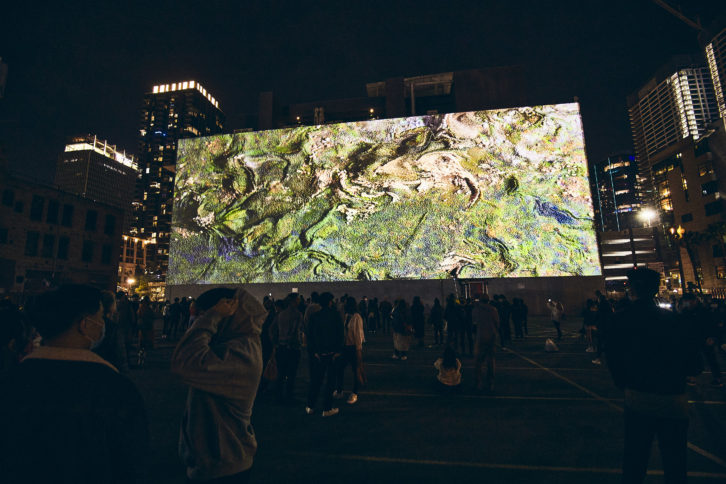 Refik Anadol, Wind Of Los Angeles
Refik Anadol, Wind Of Los Angeles
The data-driven projection whiz interpreted the invisible patterns of wind into sculptures projected onto the facade of the Desmond building on Hope St., driving the colors and pattern with the underlying reality of wind.
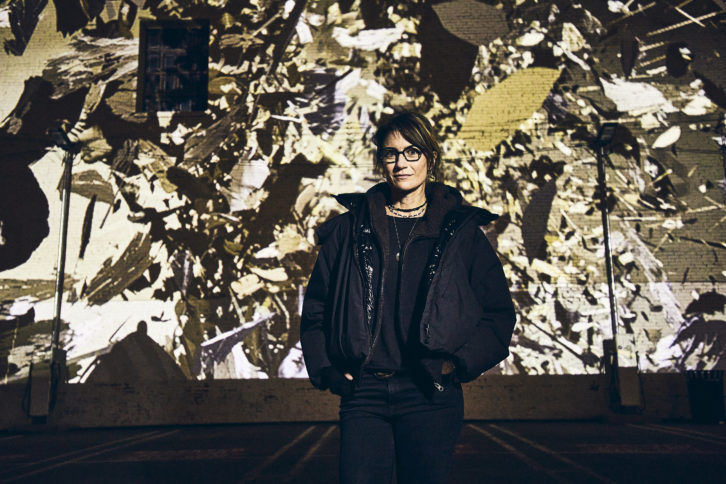 Nancy Baker Cahill, Hollow Point 101
Nancy Baker Cahill, Hollow Point 101
The founder of AR platform 4th Wall crafted a piece designed to encapsulate our current moment of high-impact shattering in terms of culture, politics and the environment.
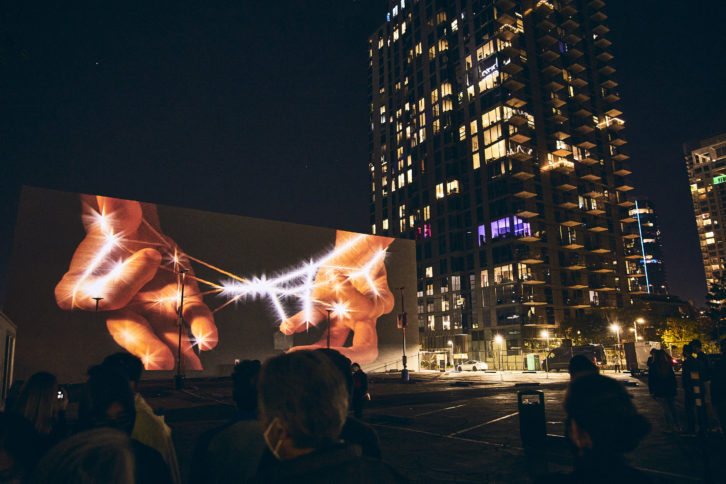 Sarah Rara, Perfect Touch 202
Sarah Rara, Perfect Touch 202
The multi-disciplinary artist spanned the north and south walls of a building with an installation that speaks to connecting divisions.
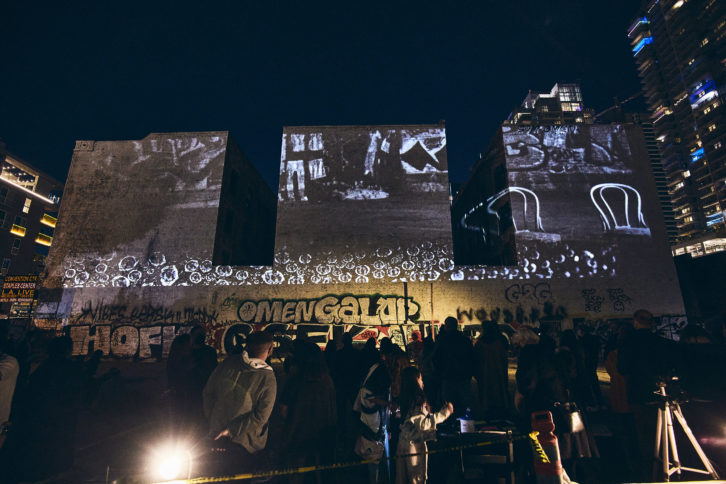 Carole Kim, A Void A Void
Carole Kim, A Void A Void
The video projection artist used the two inlets of the old Morrison Hotel to explore loss, isolation, and communication.
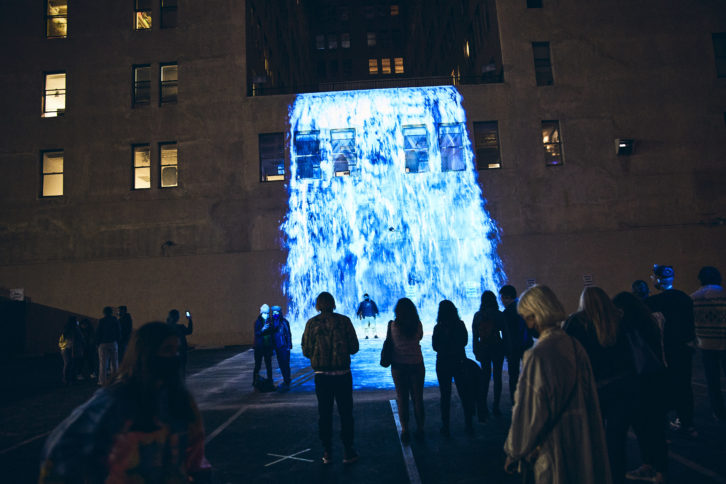 Luciana Abait, Agua
Luciana Abait, Agua
The climate change-focused mixed-media artist adapted the floodmyth motif into a healing video piece that combined clips of water from around the world.
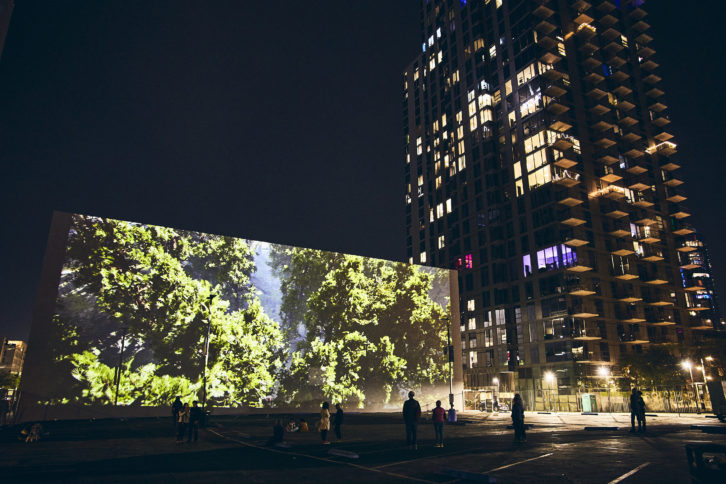 Akiko Yamashita, Forest Perception
Akiko Yamashita, Forest Perception
The projection-mapping specialist created a life-size forest on the north and south walls of the building on Olive St.—one side focused on the roots, the other looking down from the canopy.



